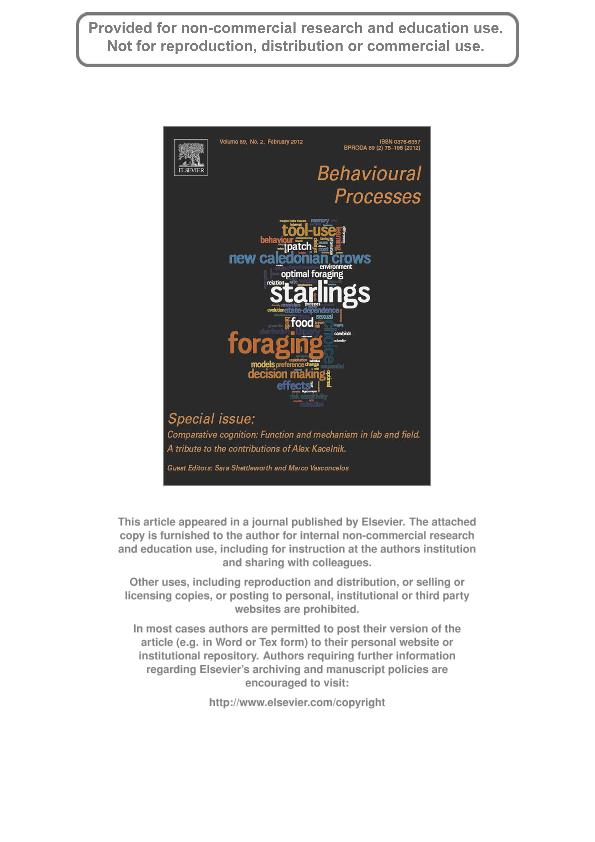Artículo
Do shiny cowbird females adjust egg pecking behavior according to the level of competition their chicks face in host nests?
Fecha de publicación:
02/2012
Editorial:
Elsevier Science
Revista:
Behavioural Processes
ISSN:
0376-6357
Idioma:
Inglés
Tipo de recurso:
Artículo publicado
Clasificación temática:
Resumen
Interspecific brood parasites, like the shiny cowbird (Molothrus bonariensis), lay eggs in nests of other species. Shiny cowbird females peck and puncture eggs when they parasitize host nests. This behavior increases the survival of cowbird chicks when they have to compete for food with larger nestmates. However, cowbird chicks may benefit from smaller nestmates as they increase food provisioning by parents and the cowbird chicks secure most extra provisioning. We investigated whether egg-pecking behavior by female shiny cowbirds might be adjusted to the competition that their chicks face in host nests. We found that more host eggs are destroyed per cowbird egg laid in a larger-bodied host (chalk-browed mockingbird, Mimus saturninus, 70-75. g) than a smaller-bodied host (house wrens, Troglodytes aedon, 12-13. g). We also tested egg-pecking preferences in choice experiments with female cowbirds in captivity and found cowbirds presented with eggs in artificial nests pecked first and more frequently, and punctured more frequently the larger egg when this was a host egg, but not when this was a cowbird egg. Our results are partially consistent with the hypothesis that shiny cowbird females adaptively adjust their egg pecking behavior according to the competition that their chicks face in host nests.
Palabras clave:
Brood Parasitism
,
Cowbirds
,
Egg Punctures
,
Molothrus
,
Virulence
Archivos asociados
Licencia
Identificadores
Colecciones
Articulos(IEGEBA)
Articulos de INSTITUTO DE ECOLOGIA, GENETICA Y EVOLUCION DE BS. AS
Articulos de INSTITUTO DE ECOLOGIA, GENETICA Y EVOLUCION DE BS. AS
Citación
Tuero, Diego Tomas; Fiorini, Vanina Dafne; Reboreda, Juan Carlos; Do shiny cowbird females adjust egg pecking behavior according to the level of competition their chicks face in host nests?; Elsevier Science; Behavioural Processes; 89; 2; 2-2012; 137-142
Compartir
Altmétricas




